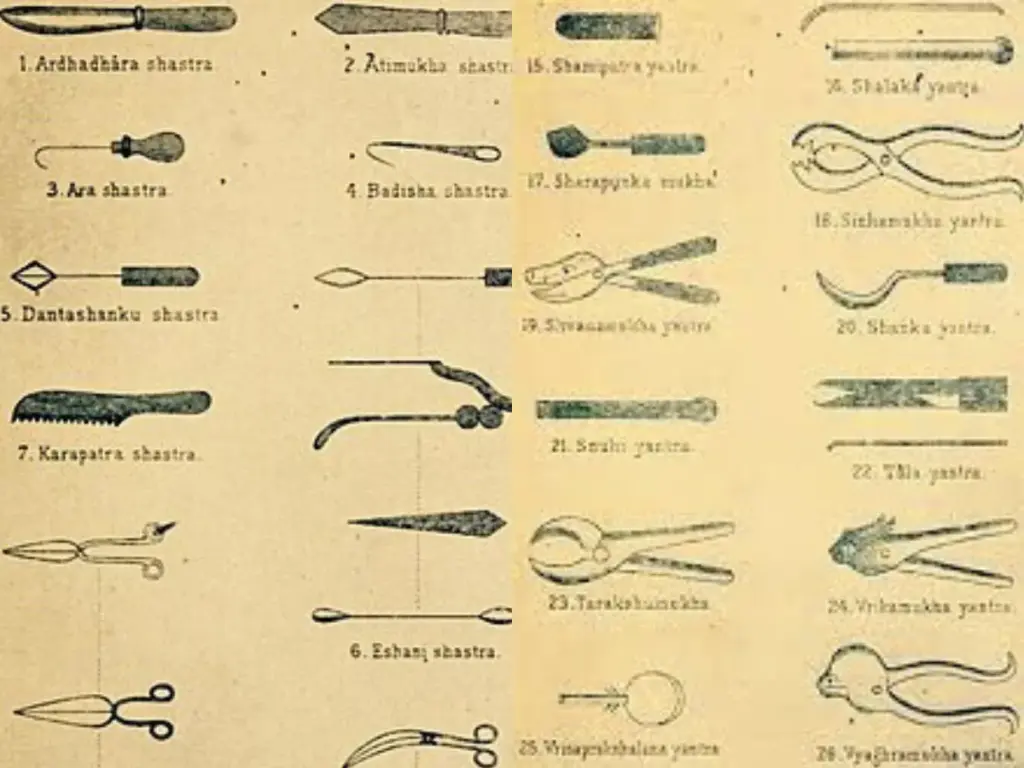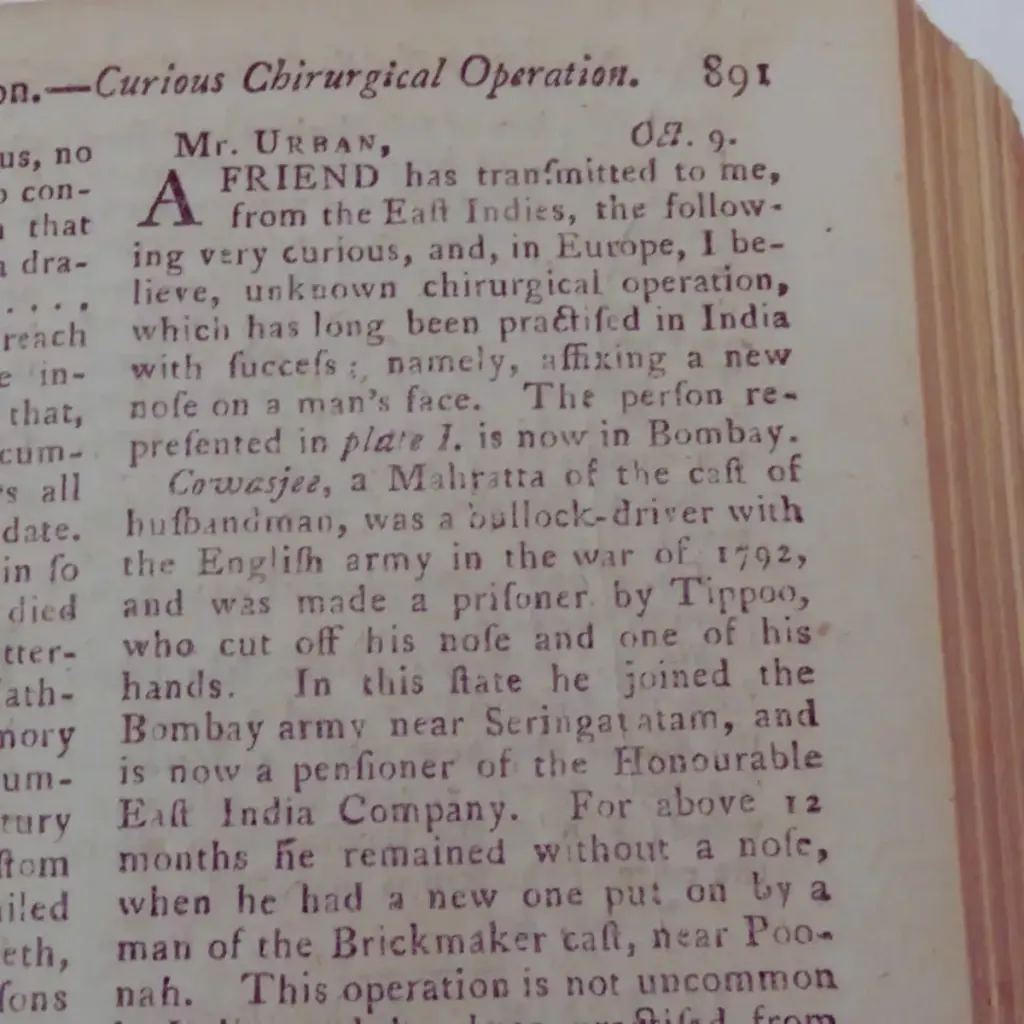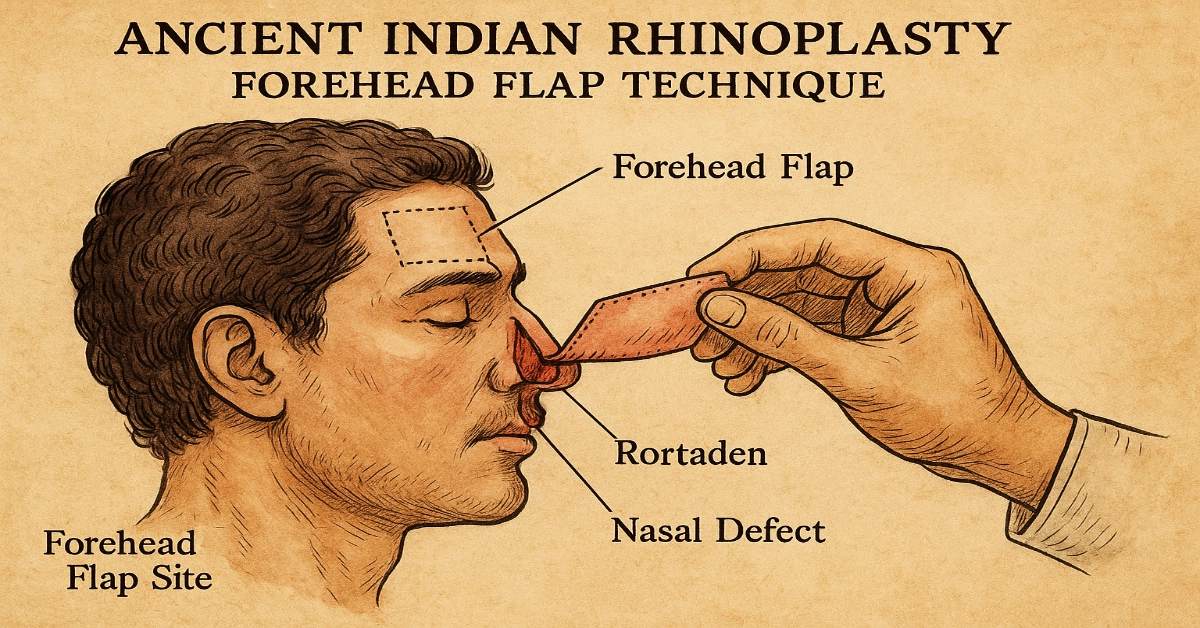Sushruta & Rhinoplasty: Plastic surgery is often seen as a product of modern science, laser-equipped clinics, and cosmetic lifestyle trends. Many assume that the word “plastic” refers to synthetic materials. It does not.
The term comes from the Greek word plastikos, meaning to mould or shape. The purpose of plastic surgery has always been to restore, rebuild, and repair the human body.
Historical evidence shows that the origins of plastic and reconstructive surgery are not modern at all. They reach back over 2,500 years to ancient India, where Aacharya Sushruta, known as the Father of Surgery and Plastic Surgery, developed advanced surgical procedures long before most of the world had even begun formal medical practice.
This knowledge would later travel across continents and influence European plastic surgery in the eighteenth and nineteenth centuries. The story is remarkable and often overlooked.
Sushruta: The First Known Surgeon in World History
Sushruta lived around the 6th century BCE in Kashi (Varanasi). His medical text, the Sushruta Samhita, is one of the earliest and most detailed surgical manuals ever written. It includes:
- Anatomical descriptions of the human body
- Guidelines for surgical training and dissection
- Treatment methods for wounds and fractures
- Designs for surgical instruments
- Techniques for more than 300 surgical procedures
Among these techniques, rhinoplasty, or nasal reconstruction, stands out as a lasting contribution to global medical science.
Did You Know?
The world’s first breast reconstruction, ear repair, and skin graft techniques also appear in the Sushruta Samhita.
Why Nose Reconstruction Was Important in Ancient India
In ancient India, the nose was a symbol of personal identity and social status. In many ancient societies was tied to spiritual symbolism, identity, honour, and social standing.
Ancient Indian texts describe the nose as the “seat of pride and dignity.” Losing it meant social death. The punishment of nasika chedana (nose removal) was recorded in several early legal and religious texts, including the Manusmriti.
The act of cutting off the nose was used as a punishment for crimes such as theft, adultery, betrayal, or war captivity.
This cultural meaning is vital to understanding why ancient India became the center of reconstructive innovation. Reconstruction as a practice emerges most strongly where injury is common or restoration has powerful cultural value
This combination was unique to ancient India and helps explain why India produced rhinoplasty procedures long before Greece, Rome, or China recorded any similar techniques.
Losing the nose was socially humiliating and deeply traumatic. Restoring the nose was not simply a medical treatment. It restored dignity. This social need led to the development of advanced reconstructive surgery.
Sushruta’s Innovative Rhinoplasty Technique
Sushruta described rhinoplasty with precise, step-by-step detail. The method later became famous as the Indian Forehead Flap or Indian Rhinoplasty. His instructions included:
- Measuring the missing part of the nose using a leaf to create a template.
- Cutting a flap of skin from the forehead or cheek.
- Rotating the flap and shaping it to form a new nose.
- Securing the graft with natural adhesives and stitches.
- Using herbal medicines to prevent infection and encourage healing.
The most striking fact is that this technique is still used today in reconstructive surgery. Modern surgeons call it the Paramedian Forehead Flap. The core idea remains identical.
Sushruta & Rhinoplasty: Surgical Instruments
The Sushruta Samhita describes more than 120 surgical instruments, crafted from wood, iron, and bronze.
Examples include:
| Instrument Name (Sanskrit) | Modern Equivalent | Purpose |
|---|---|---|
| Mandalagra | Scalpel | General incisions |
| Karapatra | Surgical saw | Bone cutting |
| Vridhipatra | Razor knife | Fine tissue work |
| Arddhadhara | Half-curved scissors | Soft tissue shaping |
| Shalaka | Probes and cautery rods | Accessing cavities and stopping bleeding |

These instruments demonstrate:
- Understanding of metallurgy
- Precision craftsmanship
- Standardisation of medical tools
Ancient Indian surgical tools resembled modern scalpels, scissors, forceps, and speculums. No other civilisation of the era left such a complete surgical toolkit record.
Inside the Medical Training of Sushruta’s Students
Sushruta’s educational approach shows remarkable scientific reasoning:
Training Methods Included:
| Method | Purpose |
|---|---|
| Cadaver Dissection | To teach real anatomical structure |
| Vegetable Models (pumpkins, melons, gourds) | To practice incisions and suturing |
| Animal Skin Practice | To develop precision and control |
| Apprenticeship (Gurukul System) | To ensure skill, discipline and surgical ethics |
Cadaver study was highly controversial in many ancient cultures and outlawed in Europe for centuries. This means ancient Indian surgeons possessed practical anatomical understanding long before many others.
Sushruta Samhita, Book 1, Chapter IX
Students are to practice surgical techniques on gourds and dead animals.

The Spread of Indian Rhinoplasty Across the World
The knowledge did not stay within India. The Sushruta Samhita was translated into Persian and Arabic during medieval times and later reached Europe. Yet, a major turning point came during British rule in India.
The Case That Changed Western Medical History
In 1794, a man named Cowasjee, whose nose had been cut off during the Mysore wars, had it surgically reconstructed by Indian surgeons in Pune. British doctors witnessed the procedure, documented it, and published it in The Madras Gazette.
The report was later reprinted in The Gentleman’s Magazine in London.

The event astonished European surgeons.
How British Surgeons “Rediscovered” Indian Plastic Surgery
In the late 18th century, during British rule in India, soldiers and Indian sepoys who lost their noses in battles or punishment underwent this traditional surgery performed by Indian craftsmen-surgeons, especially from the Kumhar and Vaidya communities in Maharashtra.
In 1794, the British newspaper The Madras Gazette published a detailed report of an Indian surgeon performing rhinoplasty using the forehead flap. The news stunned the European medical world.
Soon after, British surgeons Joseph Carpue and Henry Cline studied the Indian technique. Carpue even traveled to India, observed the procedure, and successfully used it in England. His work became the basis of modern European plastic surgery textbooks.

| “The October issue includes a well-known article written by ‘B. L.’ It describes a surgical method practiced in India by a man from the brickmaker caste, which the writer believed was not known in Europe. The method involved using skin from the forehead to create a new nose. The article also included a full-page illustration showing the final result. |
In other words, Europe did not invent rhinoplasty, it borrowed it from India.
Read Also: History of Medical Education in India: Ancient to Modern Reforms
Legacy of Sushruta in Modern Medicine
The foundational surgical principles Sushruta emphasised still guide surgeons today:
- Anatomical precision
- Hygiene and sterilisation
- Ethical patient care
- Functional reconstruction (not just appearance)
Plastic surgery today may use micro-tools, anaesthesia, and advanced materials, but the core techniques remain rooted in ancient Indian knowledge.
Other Influential Indian Practitioners
The technique continued to be practised for centuries in India. One important figure was Dr. Tribhovandas Motichand Shah from Gujarat, who published a study of over 100 rhinoplasty cases in 1889.
His work helped preserve the original Indian surgical tradition even as Western medicine expanded.

The Cultural and Scientific Significance
The achievements of Sushruta reveal several important truths:
- India had structured medical education long before many other civilisations.
- Ancient Indian surgery was evidence-based, practical, and ethical.
- Techniques developed in India shaped global surgical practice.
This history is often missing in mainstream medical education because of:
- Colonial erasure
- Language barriers between Sanskrit texts and modern research
- Western dominance in academic historiography
Yet the evidence is clear and well-documented.
Yes, ancient India did perform plastic surgery, and with remarkable precision. Sushruta’s rhinoplasty technique is one of the earliest and most enduring surgical innovations in human history.
From restoring dignity to people in ancient society to shaping global medical knowledge, India’s contribution is undeniable.
India was not only a center of cultural philosophy and spirituality. India was also a pioneer of scientific and medical progress.
This legacy continues to inspire surgeons and medical scholars worldwide.


